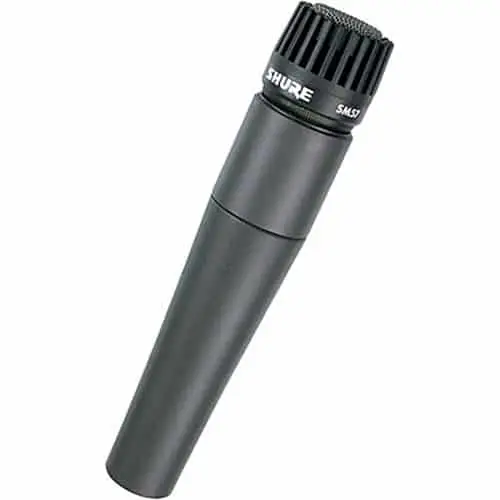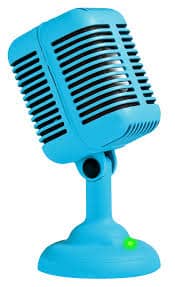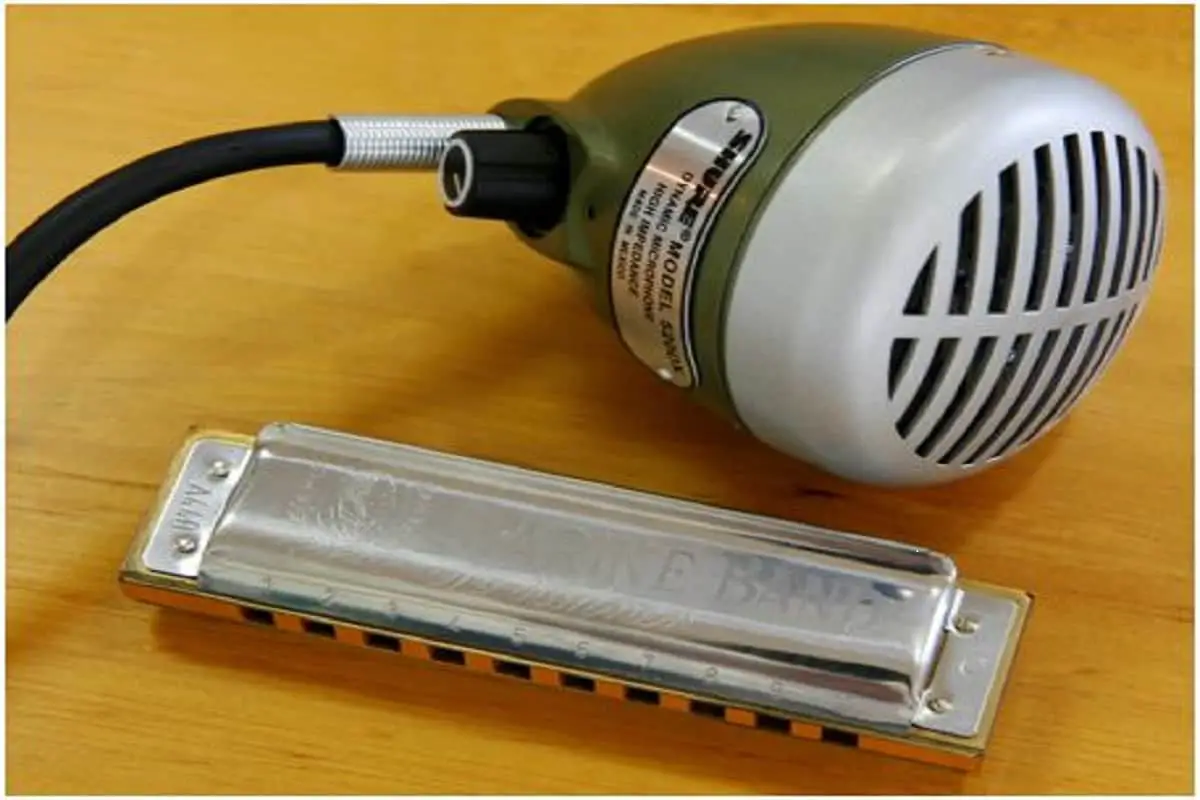To unleash a Blues or Rock Harmonica’s full musical potential requires considerable technical and physical ability, and in the hands of the skilled player, miked right, it is transformed into an expressive and versatile live instrument on stage. How do you amplify a Harmonica?
- Use proper hand positions for holding the Harmonica
- Hold Mic airtight & sealed preventing any gaps in your hands
- Cover the 8-9-10 holes
- Use a quality Bullet or Stick microphone
- Use a quality Tube Amp or one with higher frequencies
- Use proper Mic Placement & Amp distance
- Use a Mic that is run directly into the Sound System
Although the Harmonica is heard across all genres of music it is distinctly associated with the sound of Chicago Blues music. There are the key elements involved in placement and position along with equipment to get the sound your looking for.
How to Hold a Harmonica
With the proper hand positions holding your harmonica the player can get the most power and control from the instrument. Holding the Harmonica properly with an airtight seal and cup. Holding the Harmonica too tight will cause air leaks as this video shows in detail. If you’re using a stick mic like a Sure 57 let the mic hang from your hand and keep the harmonica loosely sealed which if done right will give you the powerful tones you’re looking for.
Holding the Harmonica Acoustically correctly is a good start.
- Place the Harmonica in your left hand between your forefinger and thumb with them running the length of Harmonica.
- curl your left-hand fingers around making a cup shape around the Harmonica
- Cover the cup on your left hand with your right-hand sealing it
- Cover holes 8-9-10 with your right thumb
- Loosely hold your left hand with your right hand.
- work your hands to be airtight but comfortable
Hold an Amplified Harmonica with a Stick Mic like a Shure 57 that a lot of Harmonica Players use.
- Hold the Microphone in your left hand between your pinky and ring finger and the palm of your hand
- Use your right hand to balance the Mic in your left hand
- then hold the Harmonica acoustically in your left hand as we did in the 1st step.
- Cup your right hand over the Mic and your right hand covering any openings.
- Work your hands to be airtight and comfortable
Holding a Green Bullet Microphone and a Harmonica
- Hold the Microphone in your left hand using your pinky and ring finger with a little help from your middle finger.
- Keep a space between the mic and the Harmonica you don’t want the Mic hitting the Harmonica.
- Be aware of the gap between both hands and try and maneuver your hands and close any holes.
- Cover the 8-9-10 holes on the Harmonica with your right hand.
Check this great Video out on How to hold a harmonica microphone – blues harmonica lesson
Harmonica Microphones
These days Shure 520DX Green Bullet Harmonica Mic is the most popular microphone used by Blues players today. Taking after the bullet mics Shure introduced in 1949, which were evolutions from the first desk-mounted announcement microphones, the Shure 520DX is the most up-to-date iteration of the company’s green bullet harmonica mic Known for its distinctive “blues harp voice,” the 520DX features an onboard volume knob that allows you to dial in on the fly, and it’s 1/4″ plug gives you the opportunity to plug into any high-impedance device. Frequency response 100 to 5,000 Hz

Another microphone that is used in the Blues World along Harmonica playing is the Shure SM-57 Cardioid Dynamic Instrument Microphone For a stick type mic it’s capable of moderately priced and light enough to use for live and studio recording.
Used by Bluesman worldwide. The Windy City of Chicago created a backdrop for early players of the late ‘40s and early ‘50s when the amplified harmonica rig really came into its own.
It was here where the sound was spawned and progressed into what is the Chicago Blues. Players like Sonny Terry and Junior Wells. These guys used fundamental tones and added signatures to the genre like raw punch and distortion that separated them from the other Harp players in Chicago.

- Shure SM 57 An industry standard for performance and recording
- Handheld or mountable microphone for guitars, vocals, and other instruments in live sound and recording applications
- Dynamic cartridge with cardioid polar pattern
- Contoured frequency response for clean, instrumental reproduction and rich vocal pickup
Bulletini Harmonica Microphone
BlowsMeAway Bulletini-VC Harmonica Mic The BlowsMeAway Bulletini-VC Harmonica Microphone is “The tiny bullet harmonica mic known for its great big tone” that comes with volume control. Blues harp players love bullet-shaped mics, however, they can often be too big, heavy, and difficult to cup, which is essential for creating a great tone.
The BlowsMeAway Bulletini Harmonica Mic, is a bullet mic with a huge tone, thanks to the Heumann Elementtm There have been sub-sized harp mics on the market for years. Some favorite vintage elements – Shure CM and CR’s, Shure, Astatic, and Brush crystals – don’t fit shells much smaller than the traditional “JT30-size” bullets. In order to produce smaller mics, builders resort to using small, inferior elements. This mic is Blowing folks away with its small but compact power.
Peavey Cherry Bomb Harmonica Microphone is a mic with rave reviews and is priced moderately to compete with others in its classed but compared to the Shure Green Bullet basic tone is excellent and gives a professional-sounding bluestone. People that play a Shure green bullet for years, like this better in every respect. It’s reliable and durable for the stage and live play.
One Mic Bluegrass Technique
Harmonica Amp
The amplifier In the ’40s and 50s combo tube amps was the most available choice on the menu when it came to amplifying your instruments. To get that authentic Chicago-style club sound, the likes of a Monoprice 611815 15Watt, 1 x 12 Guitar Combo Tube Amplifier with Celestion Speaker & Spring Reverb
Later in the ’60s guys like Butterfield and Musselwhite favored early model Fender Tweed and Fender Twin amps, respectively, but there are other options that compliment effects rigs as well. Solid-state amps, for example, can help you achieve the more polished, modern sound that leans toward the higher frequencies of the harmonica. The Orange Amps Amplifier Part (Crush35RT) amp will sing beautifully, as will a Fender Mustang I V2 or a similar amp.

- Power 35Watt (solid-state)
- Two channels
- Speaker: 1×10 inches Orange Voice of the World
- Controls: 3 bands EQ, volume, gain, reverb
- Built-in digital reverb
Miking Blues Harmonica Tips
Not everyone plays a Harmonica Miking through an Amplifier. Another option for playing live on stage, of course, is to use a good vocal mic played (from about 3 inches away) through a quality PA system, not through an amp.
Moving farther away will add room space to make the sound brighter and moving closer will add lower end and bass with less of the room recording. The closer mic also picked up the grunts and groans that Harmonica players tend to make in the midst of playing.
Directional Mics accentuate low frequencies more as they get closer to the sound source. This is called “the proximity effect” Omnidirectional mics do not have a proximity effect. You can swap out the Directional Mic for an Omnidirectional mic and record at different distances, changing the sound.
In general, you’ll have to raise the EQ on your channel so that you have a little more bass, fewer highs, and some reverb. These settings will vary, of course, depending on the configuration and acoustics of the room. Some rooms have so much natural echo that you won’t want any reverb at all.
With a proper PA System and quality vocal mic, there should be no problems with feedback problems unless your stage speakers and monitors aren’t situated in the right positions and need a change in placement. The old standbys for micing are Shure SM57s and 58s.
These are industry-standard mics and true workhorses. (Technically the blunt-end 57 is supposed to be more for an instrument and the ball-end 58 more for a vocalist, but they both work well for either application. Buy Sm-57 or 58 the quality and price are top-notch.
When cupping a mic for amplified playing, it’s possible to record the signal from the mic before it gets to the amp. The device used to do this is called a DI or a Direct Inject. You could record right into a mic input or the instrument input on the recording interface.
There are also third-party devices that can be added after the power amp to create a line-out on the amps that don’t have the feature built-in. Look at my earlier article that talks about microphone placement for amplifiers and how they affect the sound source of any instrument when recording.
Unleash the Power of a Blues Harmonica that is miked the proper way for the explosive sound that can’t be duplicated.
How to Record a Violin
JimGalloway Author/Editor


